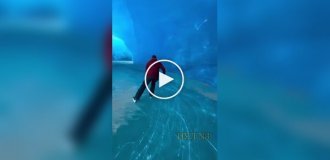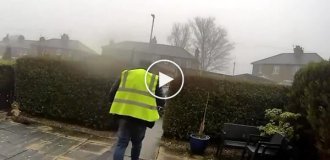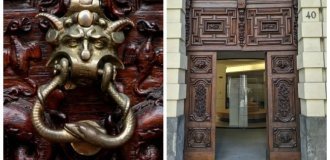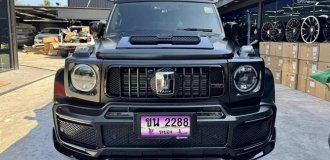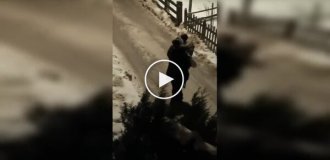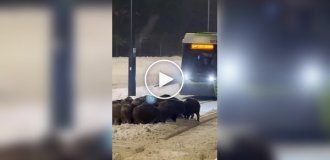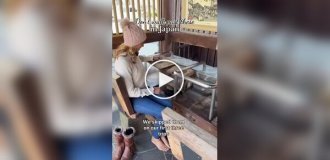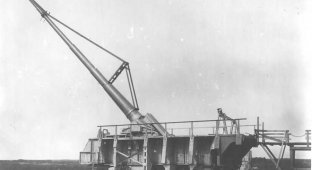Surely many people don’t know the differences between a cannon, self-propelled gun, howitzer and mortar, so first a few smart words.

A cannon is an artillery piece that fires along a flat trajectory. It is distinguished by a large barrel elongation against mortars and howitzers (40-80 calibers) and a smaller barrel elevation angle.
A howitzer is an artillery weapon that fires along a hinged trajectory, i.e. from closed firing positions. The conditional boundary between a howitzer and a cannon barrel is considered to be its length of 40 calibers.
Mortar is an artillery gun with a short barrel (less than 15 calibers) for mounted shooting. Designed to destroy enemy equipment and manpower hidden behind walls and trenches by firing along an overhead trajectory.
A self-propelled gun is a self-propelled artillery installation, without reference to the type of weapon, it can be equipped with different types of artillery systems - a cannon (SU-100), or a howitzer (ISU-152).
Video to introduce the power of the 2S3M Akatsiya, of course, it is not the 2S19 MSTA, but it is still capable of firing tactical nuclear warheads.
1. Mortar Little David (Little David) 914 mm
Experimental American mortar from the end of World War II. Despite a much more modest appearance than, for example, the Schwerer Gustav or Karl, it still holds the record for the largest caliber (914 mm or 36 inches) among all modern artillery
2. Tsar Cannon 890 mm
Medieval artillery gun (bombard), cast in bronze in 1586 by Russian master Andrei Chokhov at the Cannon Yard. The length of the gun is 5.34 m, the outer diameter of the barrel is 120 cm, the diameter of the patterned belt at the muzzle is 134 cm, the caliber is 890 mm, the weight is 39.31 tons (2400 pounds).

3. Dora gun 800 mm
Super-heavy railway artillery gun. Developed by Krupp (Germany) in the late 1930s. It was intended to destroy the fortifications of the Maginot Line and fortifications on the border of Germany and Belgium. The gun is named after the wife of the chief designer.

4. Mortar Karl 600 mm
German heavy self-propelled mortar from the Second World War. One of the most powerful self-propelled guns of its period. They were used to storm fortresses and heavily fortified enemy positions.

5. Tsar Cannon 508 mm (Perm)
The world's largest cast iron cannon, which is also a military weapon, the 20-inch Perm Tsar Cannon was manufactured in 1868 by order of the Naval Ministry at the Motovilikha Cast Iron Cannon Factory. It is not clear why the largest one is inferior in caliber to the Moscow 508 versus 890, and the barrel length is also 4.9 versus 5.34.

6. Mortar Big Bertha 420 mm
German 420 mm mortar. The mortar was intended to destroy particularly strong fortifications. The Bertha's rate of fire was 1 shot per 8 minutes, and the flight range of the 900-kg projectile was 14 km. All three types of shells used had enormous destructive power for that time.

7. Mortar launcher 2B2 Oka 420 mm
Soviet self-propelled 420 mm mortar unit. Rate of fire - 1 shot per 5 minutes. Firing range - 25 km, active-reactive mine - 50 km. Mine weight - 670 kg. Designed for firing nuclear charges. During testing, it was established that the monstrous recoil does not allow long-term operation of such a weapon. After which serial production was abandoned. There is only one “Oka” left in the metal out of four released.

8. Railway Cannon Saint-Chamond 400 mm
In October 1914, the French government formed a special commission responsible for the creation of railway weapons, which, in turn, turned to the largest arms concerns with a proposal to develop large-caliber guns on railway transporters. Design and construction work took very little time, and already in May 1915, eight railway guns from the Schneider-Creuzot company appeared at the front, and a few months later the especially powerful 400-mm howitzers from the Saint-Chamon company received their baptism of fire.

9. Rodman Columbiad 381mm
Manufactured in 1863, it had a barrel with a caliber of 381 mm, and its weight reached 22.6 tons. The American Civil War contributed to the emergence of new types of weapons - armored ships and armored trains, and the creation of means of combating them - smooth-bore Columbiad guns, named after one of the first guns of this type.

10. Self-propelled gun 2A3 Capacitor 406 mm
Soviet self-propelled 406-mm gun SM-54 (2A3) for firing “Kondensator” nuclear ammunition. In 1957 self-propelled gun 2AZ pro
walked in a parade on Red Square and created a sensation among domestic citizens and foreign journalists. Some foreign experts have suggested that the cars shown at the parade are simply props, designed for a frightening effect. However, this was a real artillery system, fired at the training ground.


